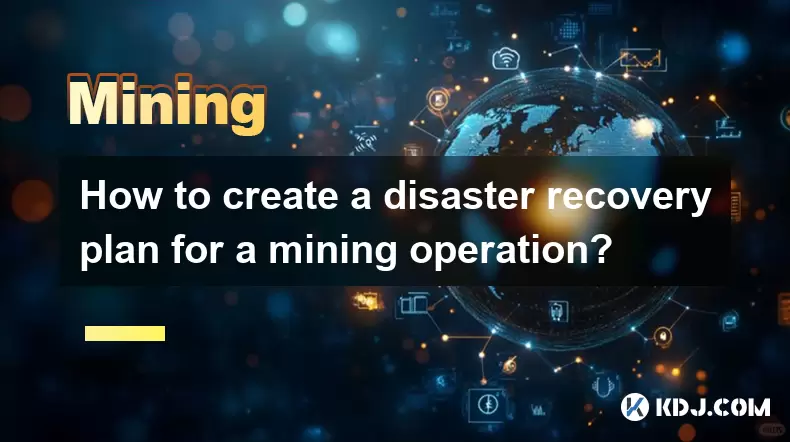-
 Bitcoin
Bitcoin $121,713.8152
3.06% -
 Ethereum
Ethereum $3,041.6437
2.42% -
 XRP
XRP $2.9499
5.12% -
 Tether USDt
Tether USDt $1.0000
-0.02% -
 BNB
BNB $704.1034
1.75% -
 Solana
Solana $166.7523
2.91% -
 USDC
USDC $0.9999
0.00% -
 Dogecoin
Dogecoin $0.2052
2.90% -
 TRON
TRON $0.3011
-0.47% -
 Cardano
Cardano $0.7461
1.42% -
 Hyperliquid
Hyperliquid $48.3650
1.12% -
 Stellar
Stellar $0.4548
3.52% -
 Sui
Sui $3.9527
14.50% -
 Chainlink
Chainlink $16.3300
5.87% -
 Bitcoin Cash
Bitcoin Cash $511.8016
1.25% -
 Hedera
Hedera $0.2395
1.40% -
 Avalanche
Avalanche $21.6526
2.06% -
 UNUS SED LEO
UNUS SED LEO $9.0073
-0.23% -
 Shiba Inu
Shiba Inu $0.0...01369
2.61% -
 Toncoin
Toncoin $3.0335
0.66% -
 Litecoin
Litecoin $96.6206
1.72% -
 Monero
Monero $355.1673
5.35% -
 Polkadot
Polkadot $4.0839
2.47% -
 Uniswap
Uniswap $9.3282
9.72% -
 Dai
Dai $0.9997
-0.01% -
 Ethena USDe
Ethena USDe $1.0004
-0.04% -
 Pepe
Pepe $0.0...01248
1.07% -
 Bitget Token
Bitget Token $4.4642
2.68% -
 Aave
Aave $325.0626
6.81% -
 Bittensor
Bittensor $418.1482
6.22%
How to create a disaster recovery plan for a mining operation?
A well-designed disaster recovery plan ensures mining operations can quickly resume after disruptions like power outages, cyberattacks, or hardware failures.
Jul 14, 2025 at 02:42 am

Understanding the Importance of a Disaster Recovery Plan in Mining
In the world of cryptocurrency mining, operational continuity is crucial. A disaster recovery plan (DRP) ensures that mining operations can quickly resume after an unexpected disruption. Whether it's a hardware failure, cyberattack, natural disaster, or power outage, having a well-documented and tested DRP minimizes downtime and protects revenue streams. For miners, especially those operating at scale, data integrity, hardware protection, and network resilience are key components to consider when designing a DRP.
Identifying Potential Risks and Threats
Before creating a disaster recovery plan, it's essential to conduct a comprehensive risk assessment. Common threats to mining operations include:
- Power outages – These can cause sudden shutdowns and potential damage to ASIC or GPU rigs.
- Hardware failures – Components like motherboards, GPUs, or power supplies may fail unexpectedly.
- Cyberattacks – Mining pools and wallets can be targeted by malicious actors.
- Natural disasters – Floods, fires, or earthquakes can physically destroy mining facilities.
- Software glitches – Firmware issues or corrupted operating systems can halt operations.
Each of these risks should be evaluated for its likelihood and potential impact. Once identified, appropriate mitigation strategies must be developed. Prioritizing vulnerabilities allows for more efficient allocation of resources and faster response times during emergencies.
Backing Up Critical Data and Configurations
Mining operations rely heavily on software configurations, wallet keys, pool credentials, and BIOS settings. Losing this data can lead to significant delays in restarting operations. To prevent this:
- Store wallet backups in multiple secure locations, both offline and online.
- Use encrypted USB drives or cold storage solutions to protect private keys.
- Regularly back up BIOS settings and firmware versions used for each rig.
- Implement automated scripts to save configuration files from mining software like CGMiner, BFGMiner, or NiceHash.
- Use version control tools to track changes made to mining scripts and configurations.
These steps ensure that even if a system crash occurs, the operation can be restored without losing access to mined assets or critical setup parameters.
Establishing Redundancy and Failover Mechanisms
Redundancy is vital for maintaining uptime during disruptions. This includes:
- Network redundancy – Set up dual internet connections with automatic failover using load balancers or routers capable of detecting outages.
- Power redundancy – Install uninterruptible power supplies (UPS) and backup generators to keep rigs running during short or prolonged blackouts.
- Hardware redundancy – Maintain spare parts such as power supply units, risers, and cooling fans onsite for quick replacements.
- Pool redundancy – Configure mining rigs to automatically switch to a secondary mining pool if the primary one becomes unreachable.
Implementing these redundancies reduces the risk of total operational collapse and ensures that mining continues with minimal interruption during unforeseen events.
Creating Step-by-Step Recovery Procedures
A clear, actionable recovery procedure should be documented and accessible to all relevant team members. These procedures should include:
- Steps to safely shut down and restart mining rigs during a power surge or outage.
- Instructions for restoring configurations from backup storage onto replacement hardware.
- Protocols for reconnecting to mining pools and verifying wallet balances post-disaster.
- Guidelines for replacing failed hardware components and recalibrating mining performance.
- Checklists for testing network connectivity and ensuring mining software is functioning properly.
Each step should be written in simple language and accompanied by screenshots or diagrams where necessary. The goal is to enable operators to recover operations quickly without requiring deep technical expertise under pressure.
Training Staff and Conducting Drills
Having a DRP is only effective if personnel know how to execute it. Training sessions should cover:
- How to identify signs of impending hardware or software failure.
- What actions to take immediately following a disaster, including contacting support teams and documenting incidents.
- Where to find physical backups, spare parts, and emergency contact information.
- How to follow established checklists to restore operations systematically.
Regular drills should simulate different types of disasters to test the DRP's effectiveness. These simulations help identify gaps in the plan and improve response times under real-world conditions.
Frequently Asked Questions
What should I do if my mining pool goes offline?
If your mining pool experiences downtime, configured rigs should automatically switch to a backup pool. You can also manually update the mining software to point to a new server address. Ensure you monitor pool status through official channels before making changes.
How often should I update my disaster recovery plan?
Your DRP should be reviewed at least quarterly or whenever there are major changes to your mining infrastructure, such as adding new rigs, changing software, or relocating facilities.
Can cloud-based mining benefit from a disaster recovery plan?
Yes, cloud mining operations still require a DRP, particularly for managing account access, monitoring contract statuses, and securing API keys. In case of service provider failure, having backups and alternative contracts in place is crucial.
Is insurance necessary for mining operations?
While not mandatory, insurance can provide financial protection against hardware loss, theft, or facility damage. Consider policies that cover equipment, data breaches, and business interruptions.
Disclaimer:info@kdj.com
The information provided is not trading advice. kdj.com does not assume any responsibility for any investments made based on the information provided in this article. Cryptocurrencies are highly volatile and it is highly recommended that you invest with caution after thorough research!
If you believe that the content used on this website infringes your copyright, please contact us immediately (info@kdj.com) and we will delete it promptly.
- Bitcoin, Michael Saylor, and the Relentless Pursuit: A Deep Dive
- 2025-07-14 20:50:12
- BONK's Wild Ride: Grayscale Buzz and Volume Spike - What's Next?
- 2025-07-14 21:10:46
- Week Review, July 7-13, Highlights: Crypto Market Surges to New Heights
- 2025-07-14 21:10:46
- Pi Network's Price Puzzle: Stability Amid Altcoin Recovery – What's Next?
- 2025-07-14 21:17:24
- ADA Eyes $1.90, HBAR & ONDO: Bullish Breakouts on the Horizon?
- 2025-07-14 21:30:11
- Bitcoin, Crypto, and the Smartest Bet: Navigating the Digital Frontier
- 2025-07-14 20:30:11
Related knowledge

How are crypto mining profits taxed?
Jul 14,2025 at 12:28am
Understanding Cryptocurrency Mining and TaxationCryptocurrency mining involves validating transactions on a blockchain network and earning rewards in ...

How to keep a mining rig cool
Jul 12,2025 at 01:42pm
Understanding the Importance of Cooling in Mining RigsCryptocurrency mining is an intensive process that places heavy demand on hardware components, p...

How much does it cost to start crypto mining?
Jul 13,2025 at 12:22am
Understanding the Basic Costs of Crypto MiningStarting crypto mining involves several upfront and ongoing expenses. The primary costs include hardware...

What is the most profitable crypto to mine?
Jul 13,2025 at 07:00am
Understanding Mining Profitability in CryptocurrencyWhen evaluating the most profitable crypto to mine, it's essential to consider several factors tha...

What do I need to start mining crypto?
Jul 13,2025 at 12:28am
Understanding the Basics of Crypto MiningCrypto mining is the process by which transactions are verified and added to a blockchain, and new coins are ...

How does crypto mining work?
Jul 13,2025 at 11:01am
Understanding the Basics of Crypto MiningCrypto mining is the process through which new cryptocurrency coins are introduced into circulation and trans...

How are crypto mining profits taxed?
Jul 14,2025 at 12:28am
Understanding Cryptocurrency Mining and TaxationCryptocurrency mining involves validating transactions on a blockchain network and earning rewards in ...

How to keep a mining rig cool
Jul 12,2025 at 01:42pm
Understanding the Importance of Cooling in Mining RigsCryptocurrency mining is an intensive process that places heavy demand on hardware components, p...

How much does it cost to start crypto mining?
Jul 13,2025 at 12:22am
Understanding the Basic Costs of Crypto MiningStarting crypto mining involves several upfront and ongoing expenses. The primary costs include hardware...

What is the most profitable crypto to mine?
Jul 13,2025 at 07:00am
Understanding Mining Profitability in CryptocurrencyWhen evaluating the most profitable crypto to mine, it's essential to consider several factors tha...

What do I need to start mining crypto?
Jul 13,2025 at 12:28am
Understanding the Basics of Crypto MiningCrypto mining is the process by which transactions are verified and added to a blockchain, and new coins are ...

How does crypto mining work?
Jul 13,2025 at 11:01am
Understanding the Basics of Crypto MiningCrypto mining is the process through which new cryptocurrency coins are introduced into circulation and trans...
See all articles

























































































